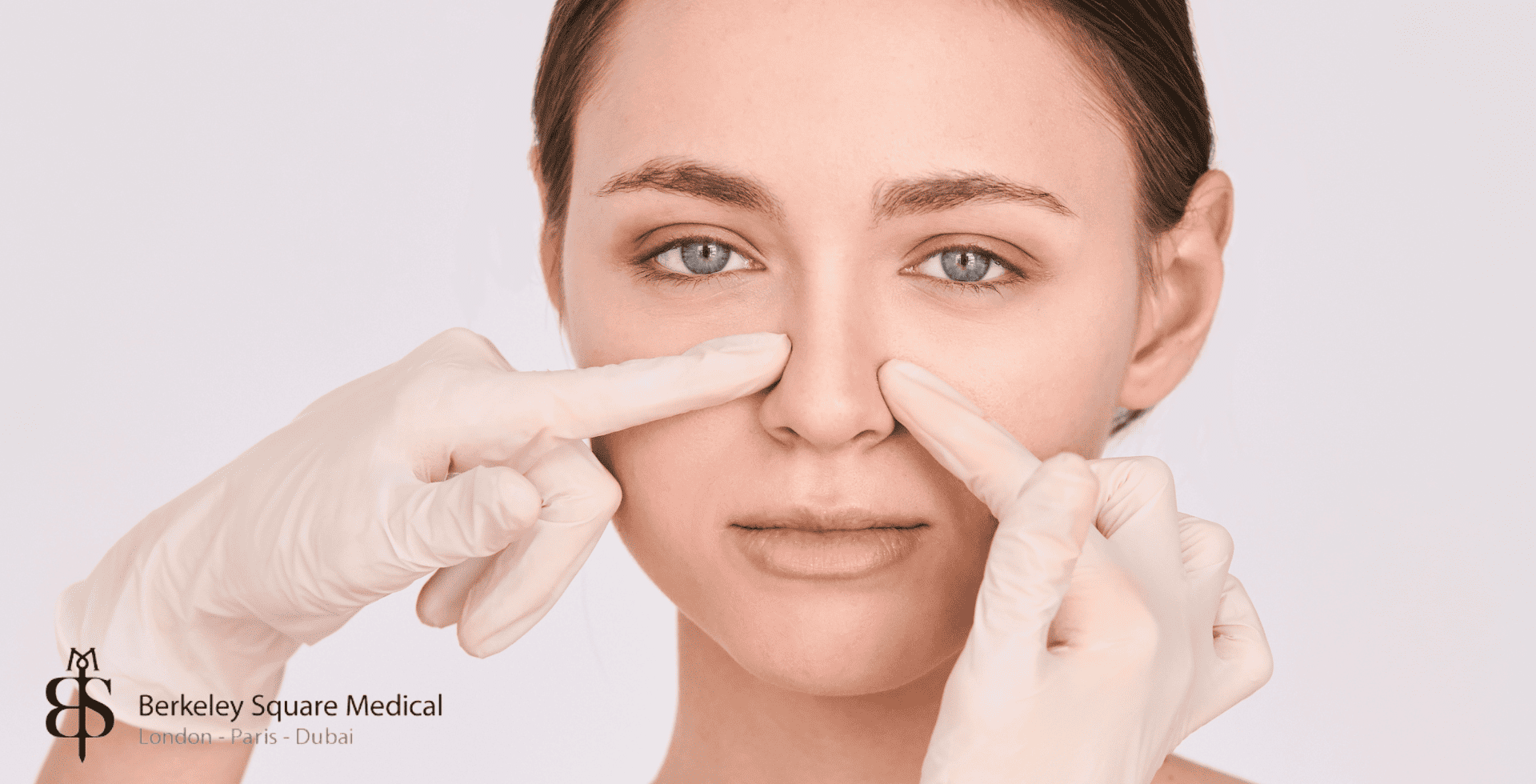
Blackheads after rhinoplasty are very common and usually caused by swelling, blocked pores, and healing skin. Rhinoplasty surgery can cause the skin to be stretched, and as it heals, blackheads may form as the oil is pushed up from below. It’s important not to squeeze, scrub, or use harsh products while your nose is still healing. Safe blackhead removal starts with surgeon-approved skincare.
Many people choose to extract their own blackheads post-surgery, but you must take precautions for yourself and your nose so that you do not make things worse. In this blog post, we will cover how to deal with blackheads after rhinoplasty!
You might also want to read our article covering other aspects of rhinoplasty aftercare here.
Blackheads are common after rhinoplasty due to tape, splints, and healing skin.
Do not squeeze, scrub, or use pore strips without your surgeon’s OK.
Wait at least 3–6 weeks before trying exfoliants or cleansers.
Salicylic acid, toner, and gentle skincare may help—only if approved.
Pore strips are usually not safe until 3–6 months post-surgery.
Blackheads are formed when your pores get clogged with oil and bacteria. This can happen as the nose is healing from rhinoplasty because there has been a change to the structure of your skin due to the surgery.
The other main reason is that your nose may be covered by a splint and tape for about a week after the procedure, making it difficult for your skin to expel oil from the pores.
Week 1–2
Use only gentle saline sprays
No blackhead removal or exfoliating
Week 3–4
You may start using a mild toner (if your surgeon approves)
Avoid scrubbing or exfoliating
Week 5–6
Light exfoliation or low-strength salicylic acid cleanser (only if approved)
Avoid harsh scrubs or blackhead tools
Month 3–6
You may be cleared to use blackhead strips or undergo light chemical peels
Always check with your surgeon before starting new treatments
If you have a dermatologist, then it is best to schedule an appointment with them instead of trying to extract them yourself. They can use their medical tools and knowledge about which ones to use in order to get rid of your blackheads in the safest way possible.
If you are heading out and need to get rid of blackheads quickly, covering them up with makeup may be a temporary solution.
If neither of the above options suits you, follow the steps below to clear blackheads at home.
Before you begin, make sure that your doctor has removed any stitches and given you clearance to do so. If they have not, then it is best to wait until the time frame indicated by them before cleaning your own blackheads.
You should also be careful about how you extract blackheads after surgery. Never use sharp tools, as this can damage the skin and cause complications to arise later on.
Pinching, poking, or squeezing a blackhead is never recommended. This can enlarge pores and cause irritation of the skin. There is also a risk of scarring.
Start by cleansing your skin with a gentle salicylic acid cleanser.
Using a skin brush, you can open blackheads up in a way that is not jeopardizing your surgery results.
Gently rub your skin with a cotton pad soaked in alcohol. This will dry blackheads off.
A simple toner can be used after the bandage has been removed. However, avoid rubbing, massaging, or wiping too hard.
In the early stages following surgery, the skin in the nose can be extremely sensitive, so it is best to avoid using aggressive exfoliators.
Swelling and tape can block oil from leaving your pores, especially while your skin is healing. This buildup can create blackheads as oil and debris collect in clogged pores.
Wait at least 3–6 weeks after surgery. Then, with your surgeon’s approval, you can begin using a gentle salicylic acid cleanser. Avoid squeezing, scrubbing, or using pore strips too early in the healing process.
Most surgeons recommend waiting 3 to 6 months before using pore strips. The skin on your nose remains sensitive for months after surgery and can be easily damaged by adhesive strips.
Yes, but only after your surgeon gives you the go-ahead—usually around weeks 4 to 6. Start with a low-strength formula and avoid scrubbing or massaging it aggressively into the skin.
No, popping blackheads or pimples can lead to scarring, infection, and even disrupt delicate cartilage while healing. Instead, use a gentle toner or consult your surgeon for safe treatment options.
Light chemical peels may be safe after 1–2 months, but medium or deep peels should be avoided until your nose is fully healed. Always speak with your surgeon before scheduling any skin treatments.